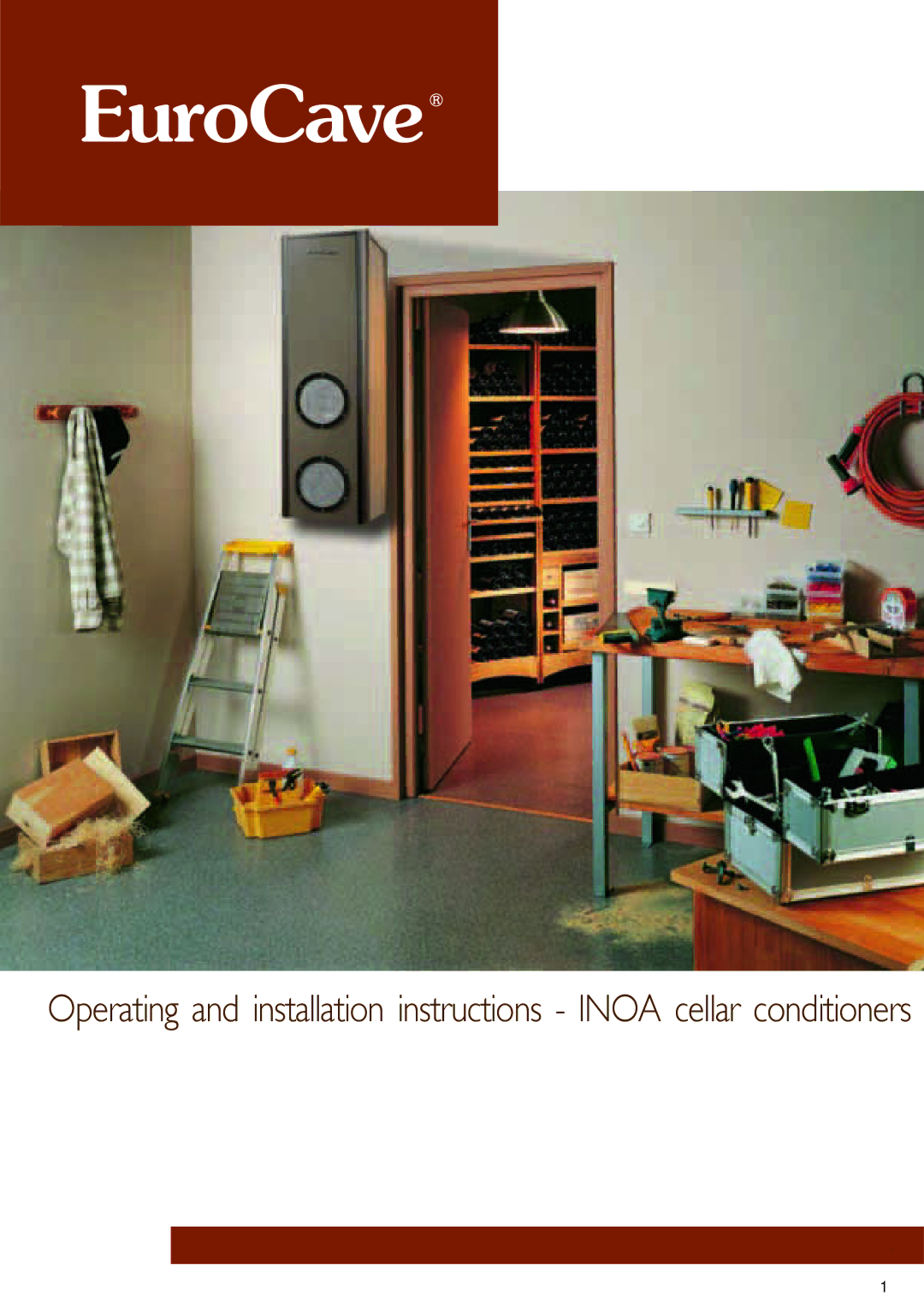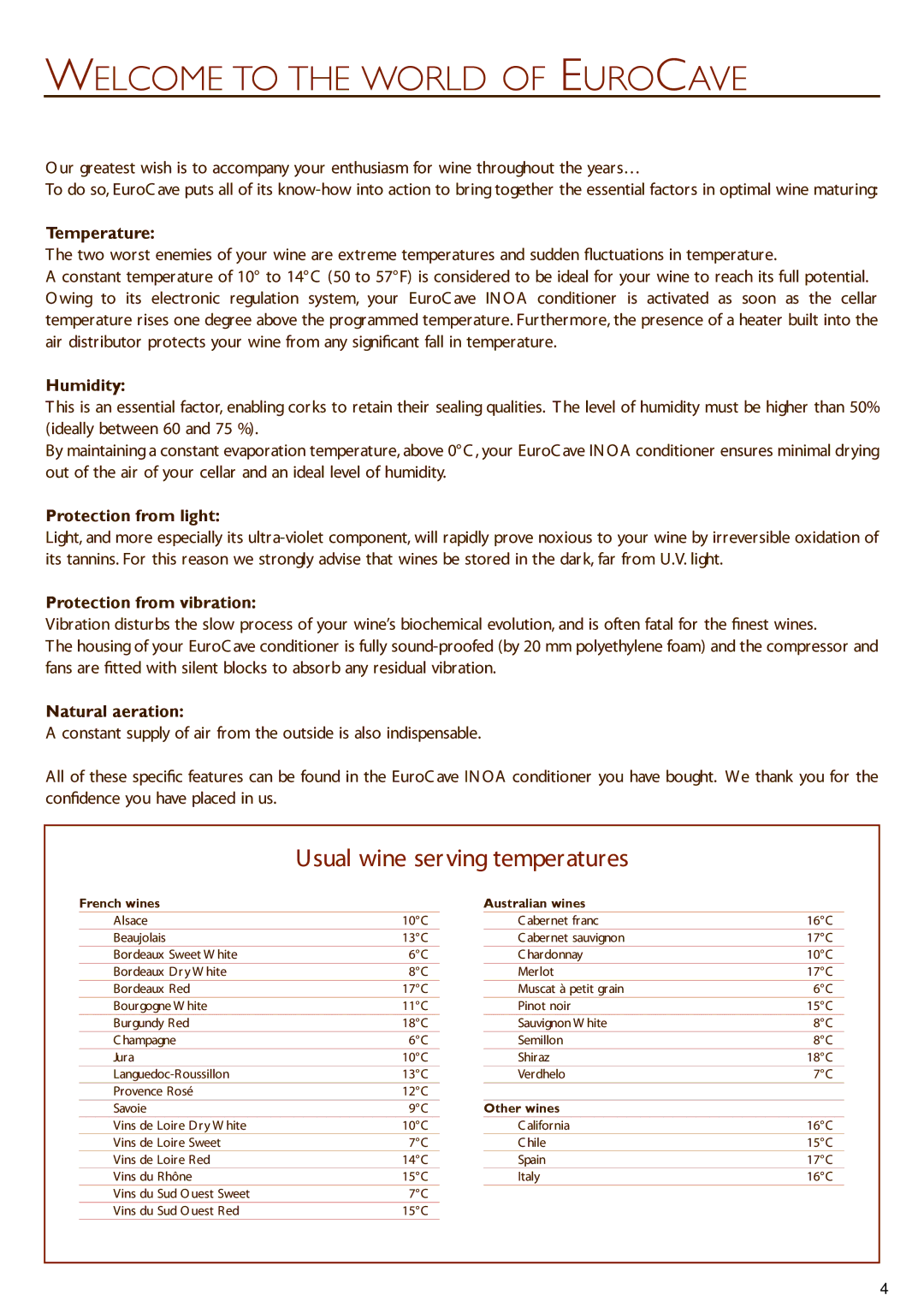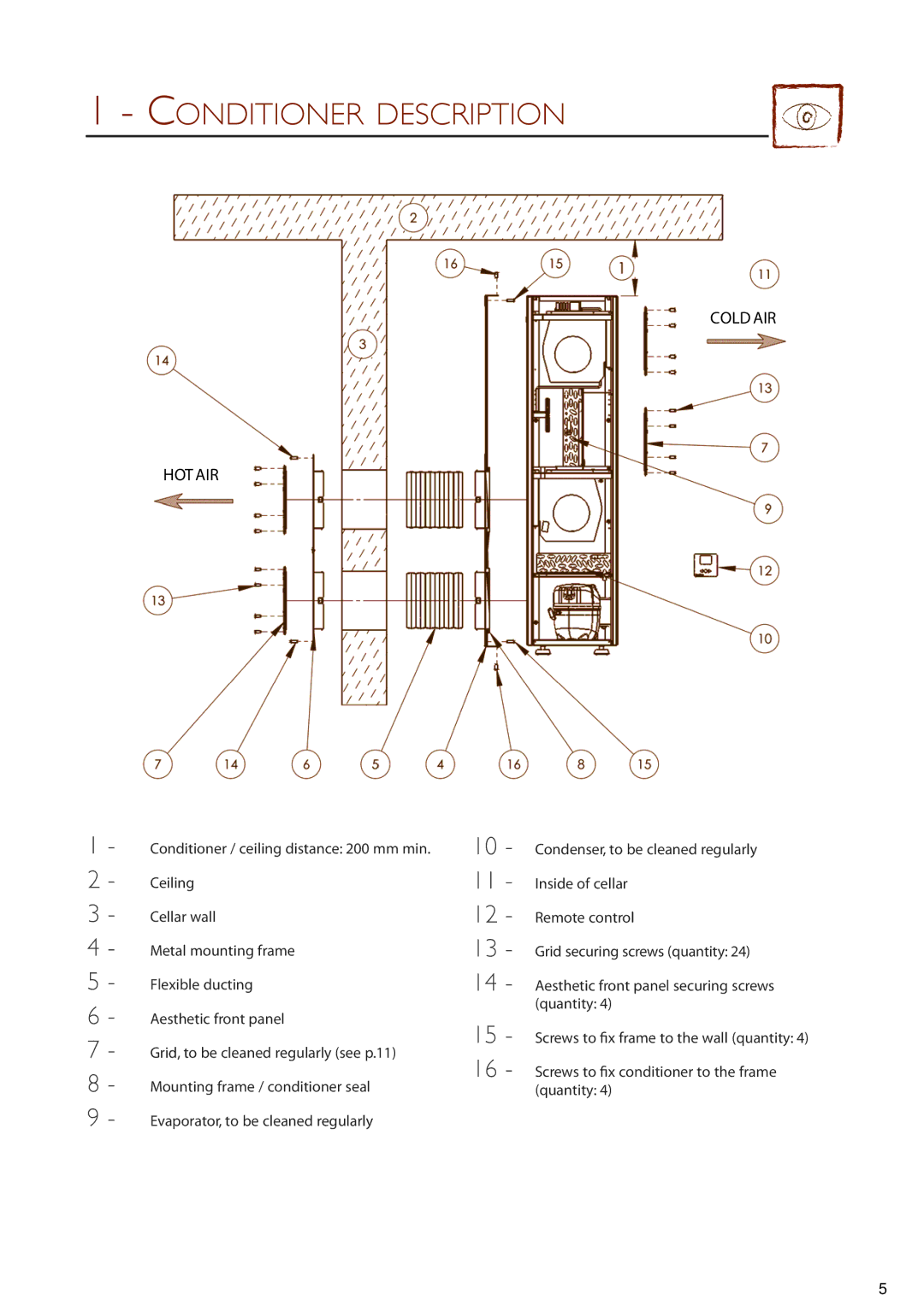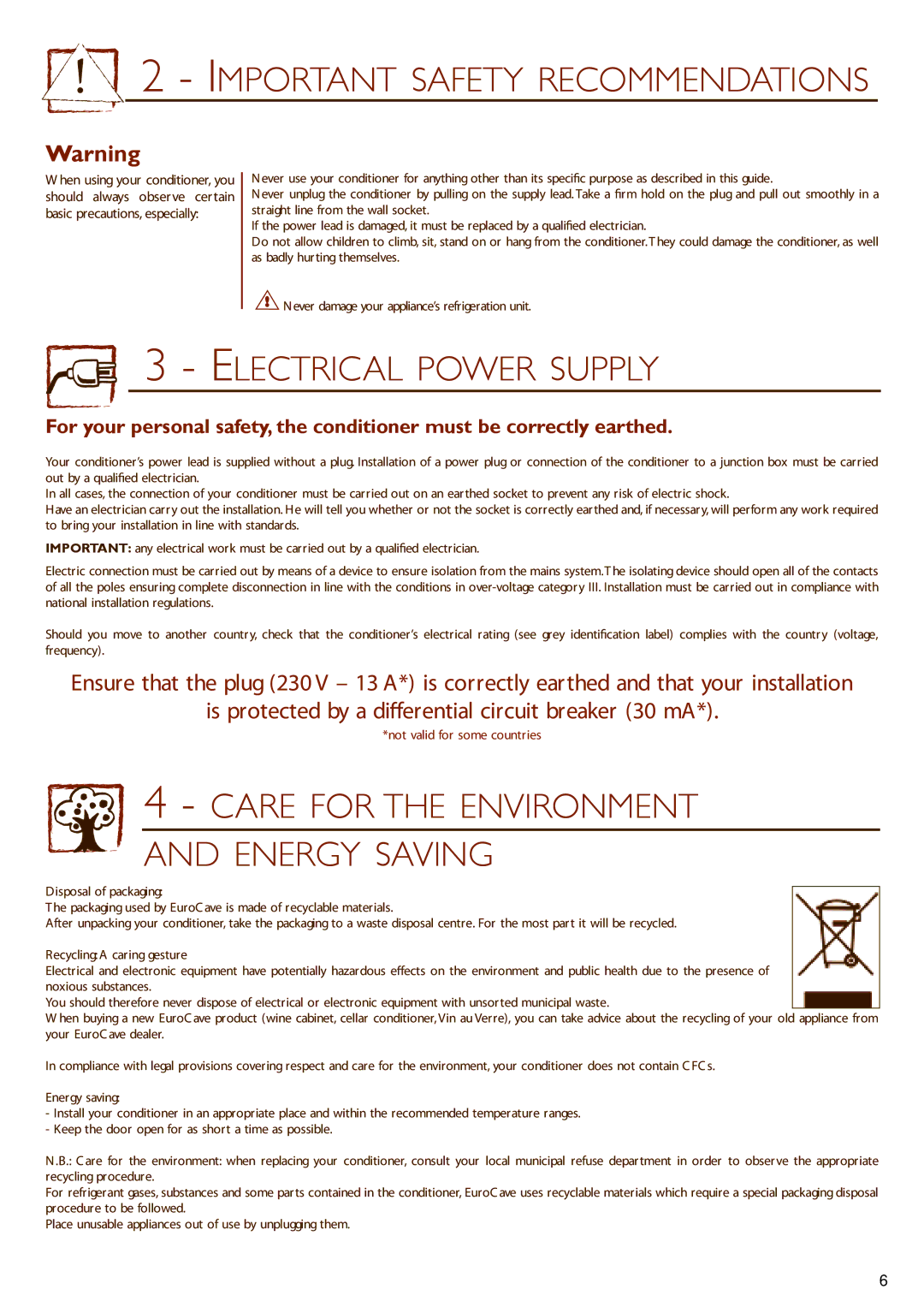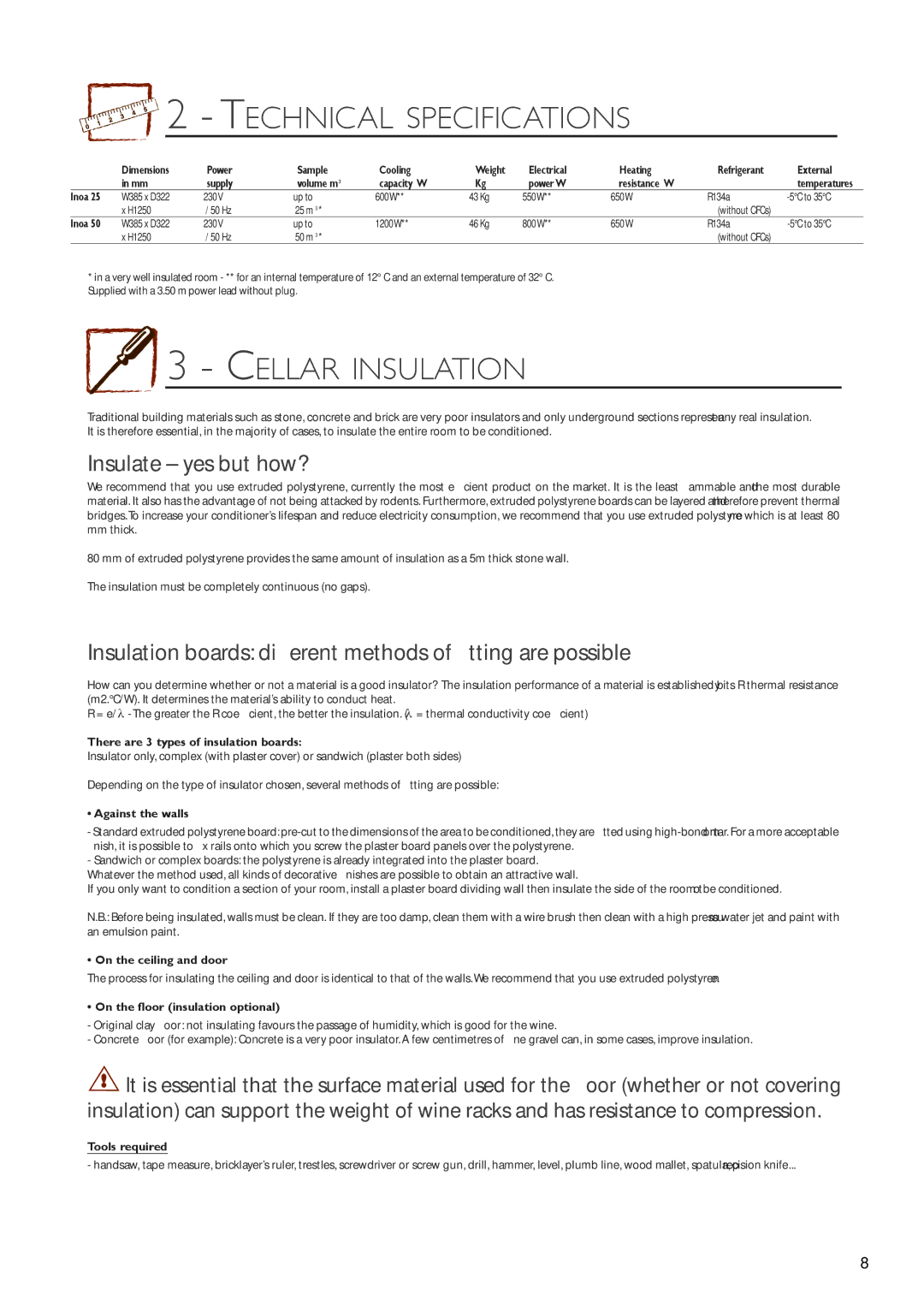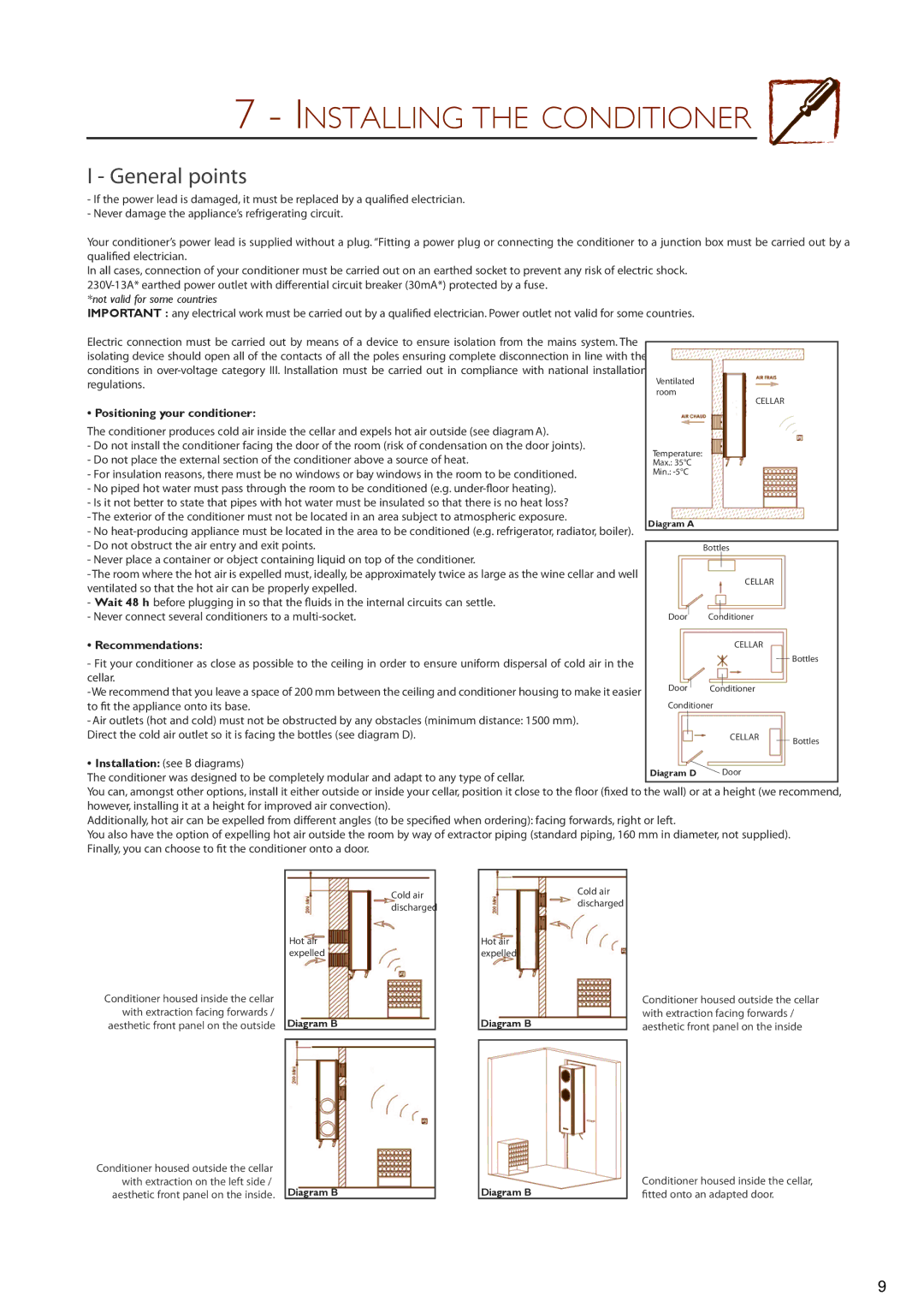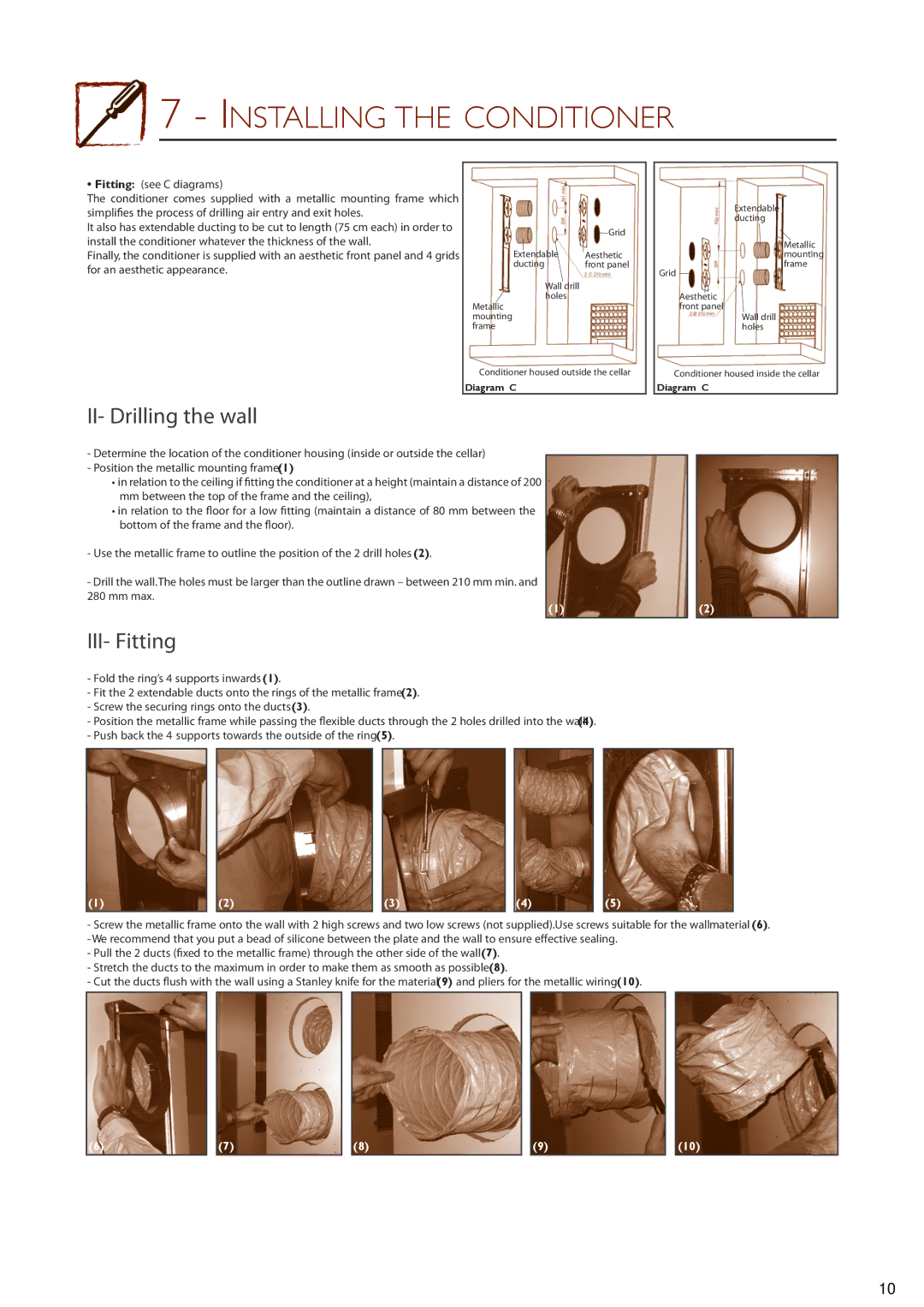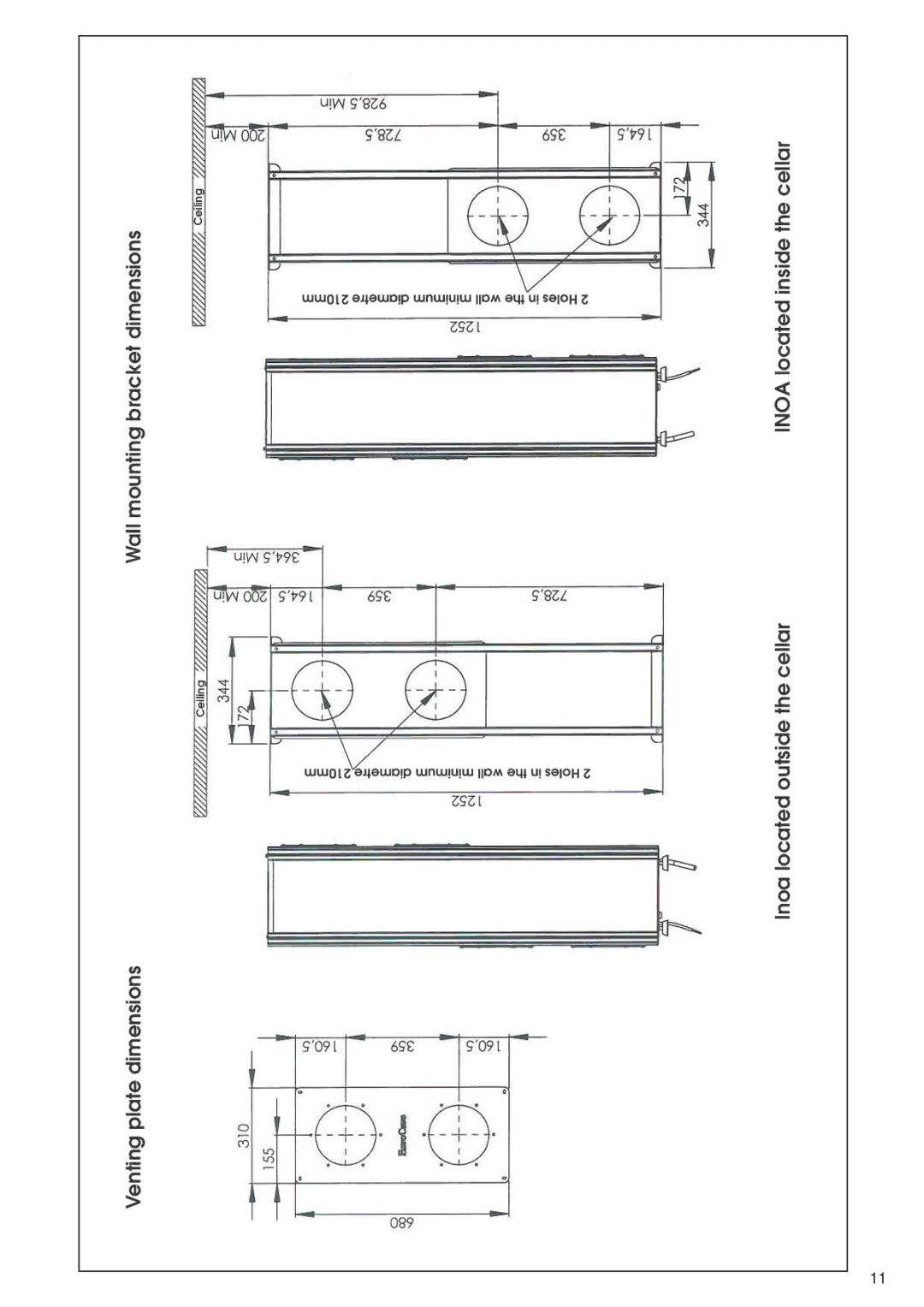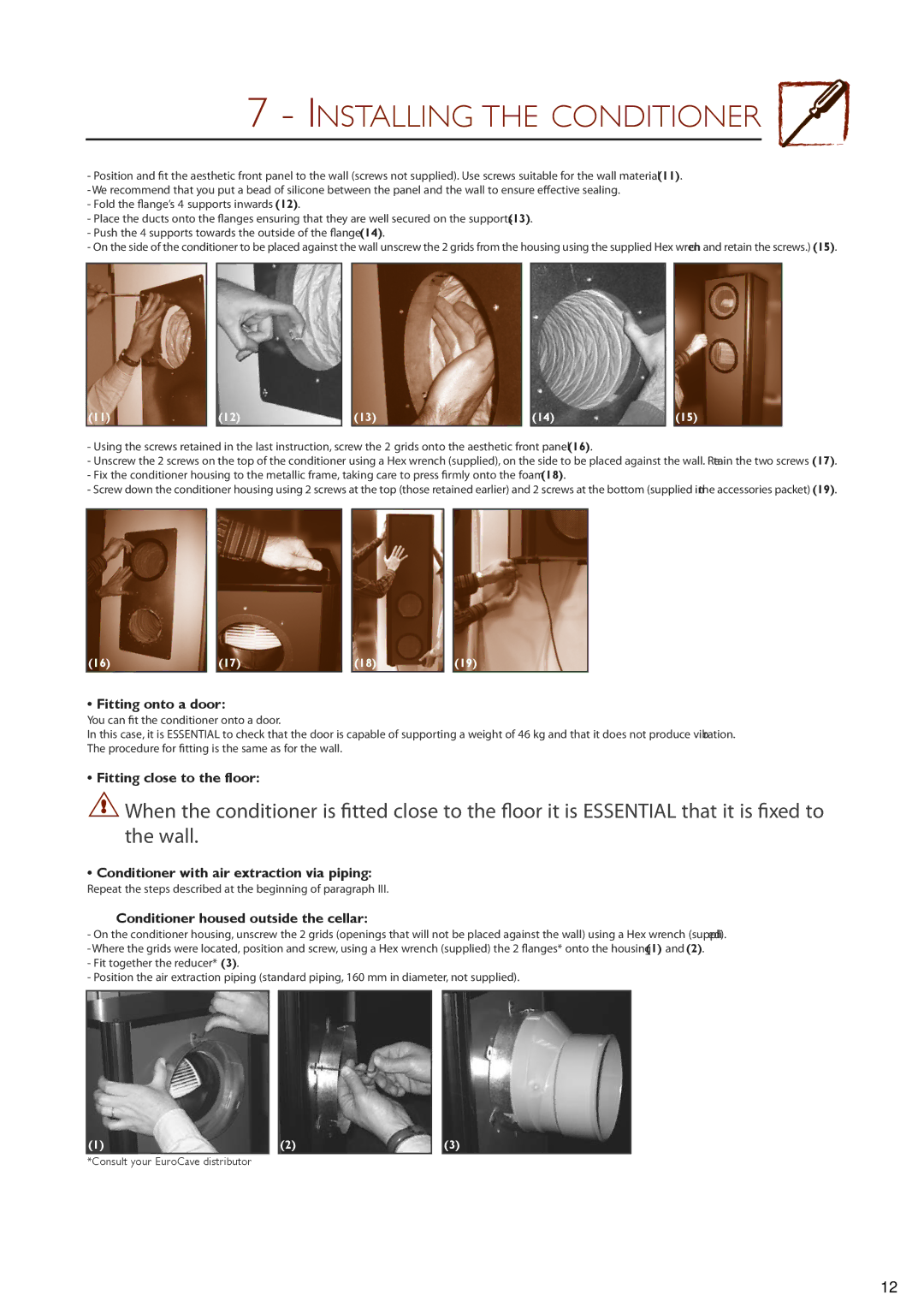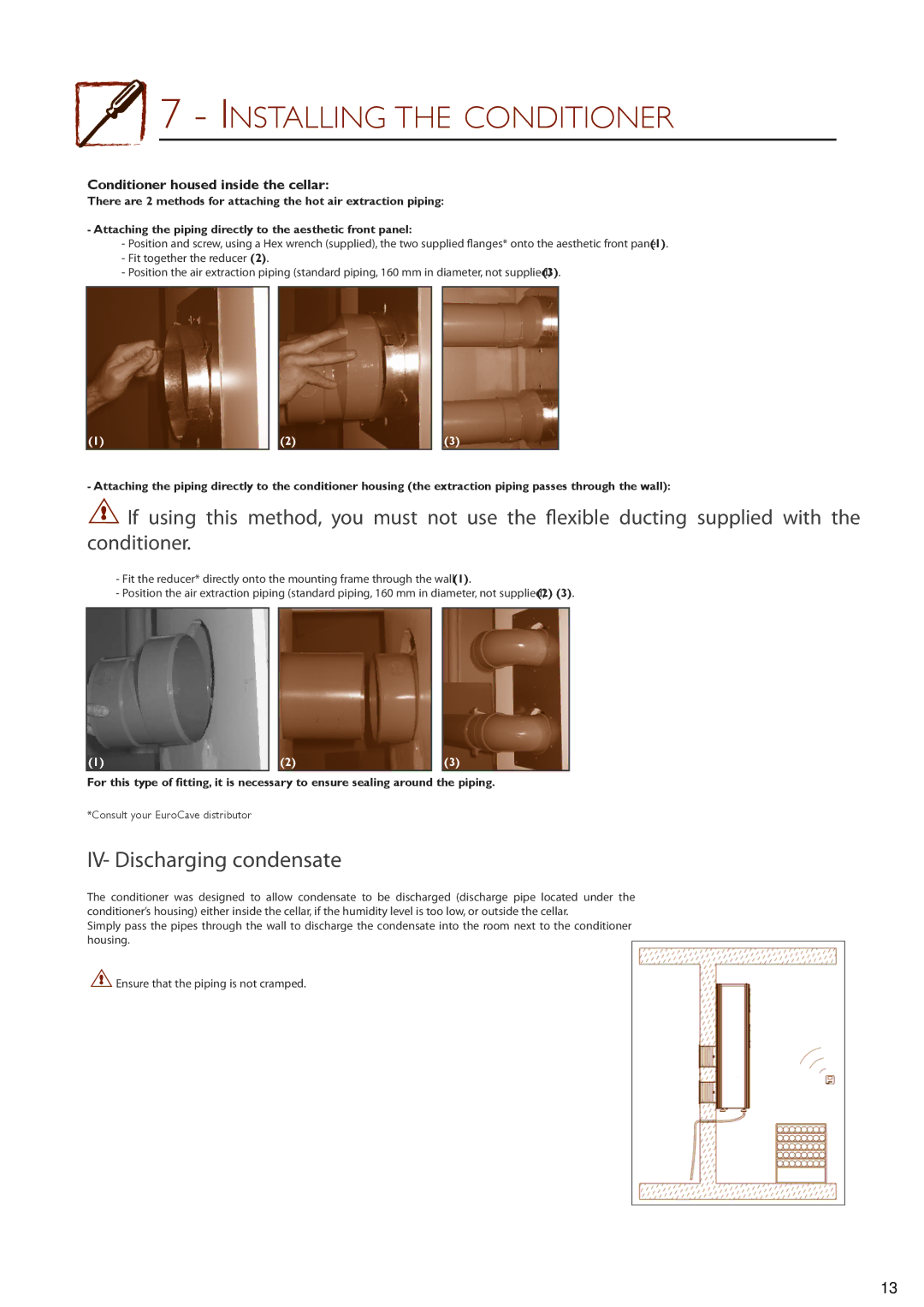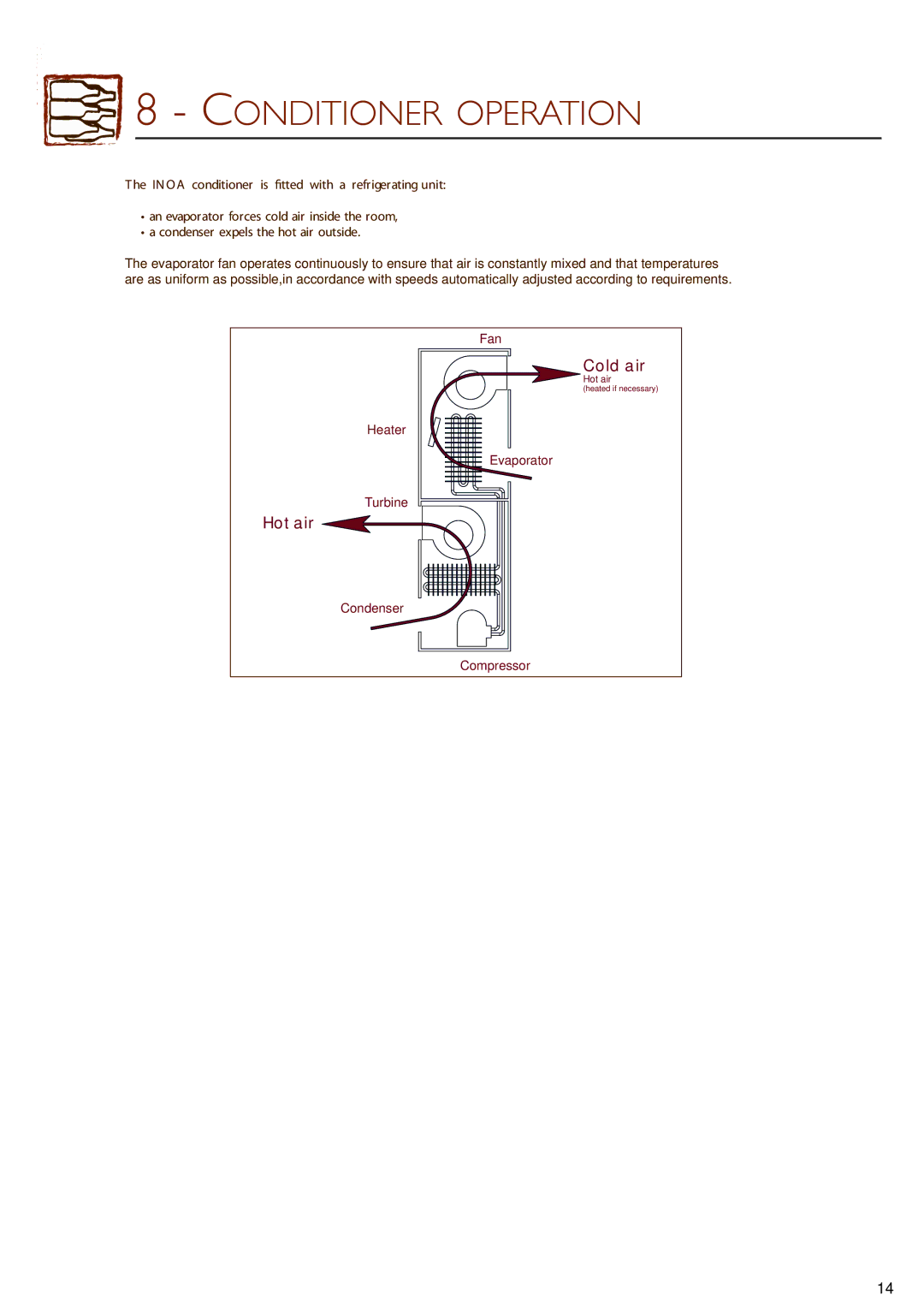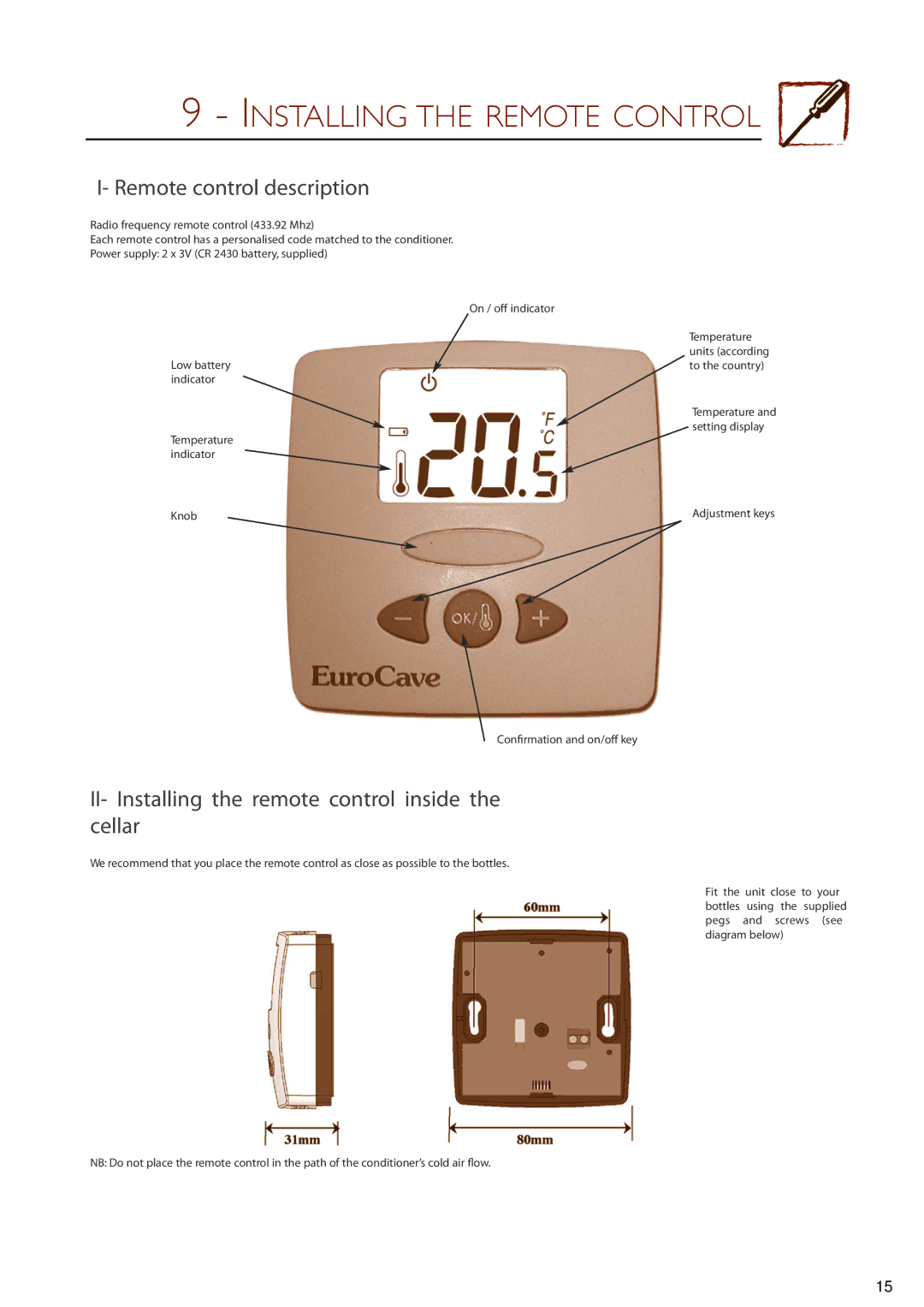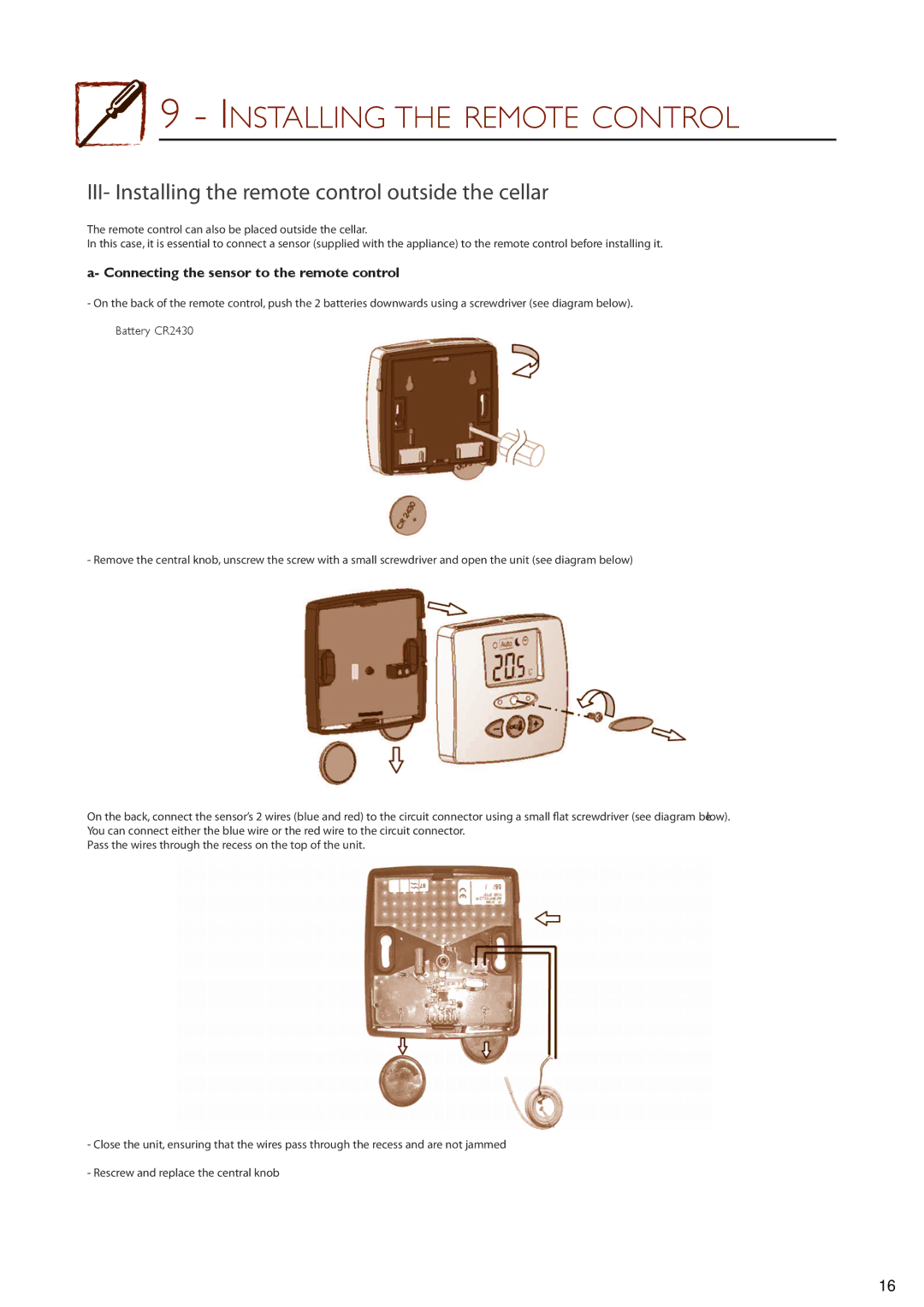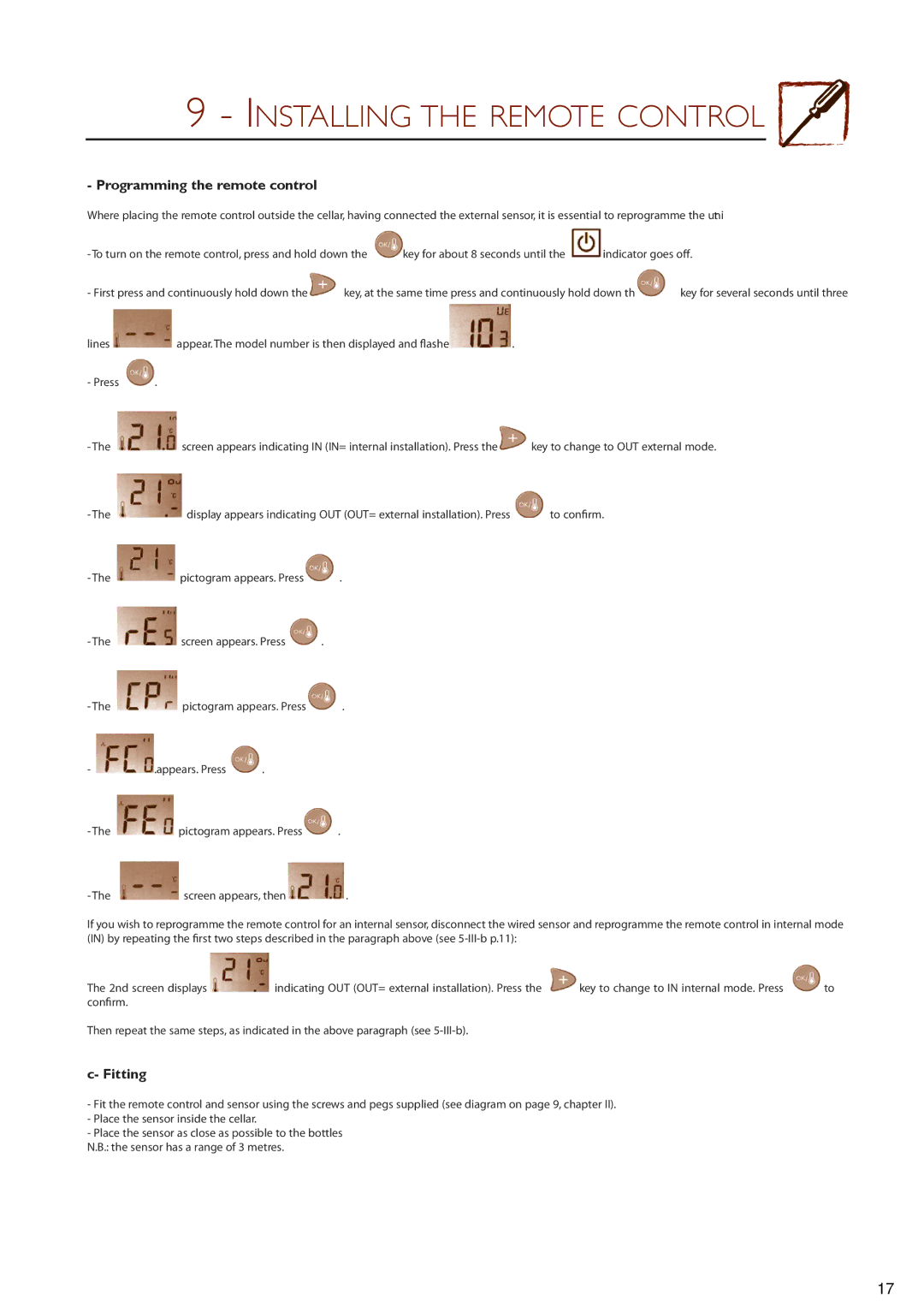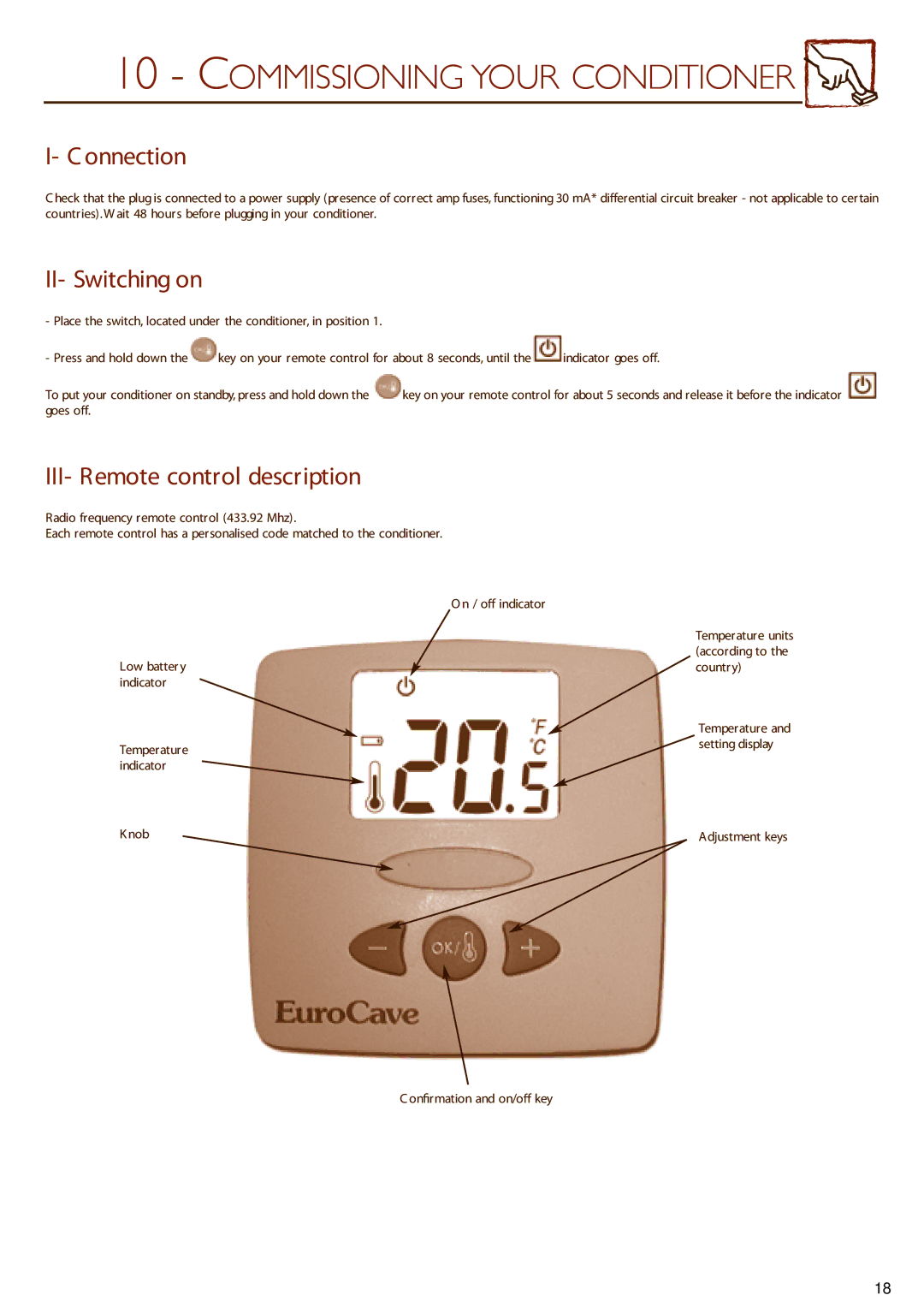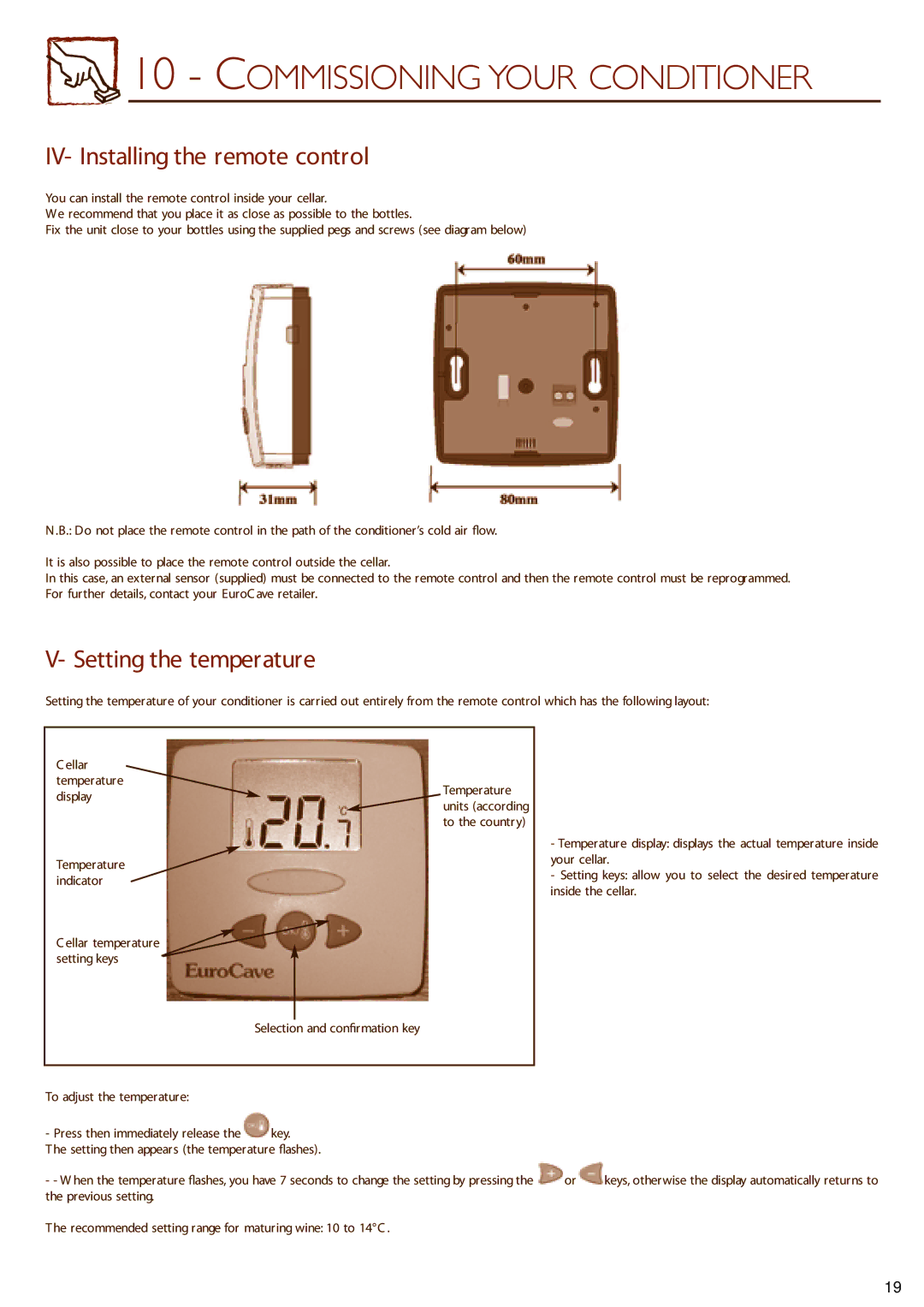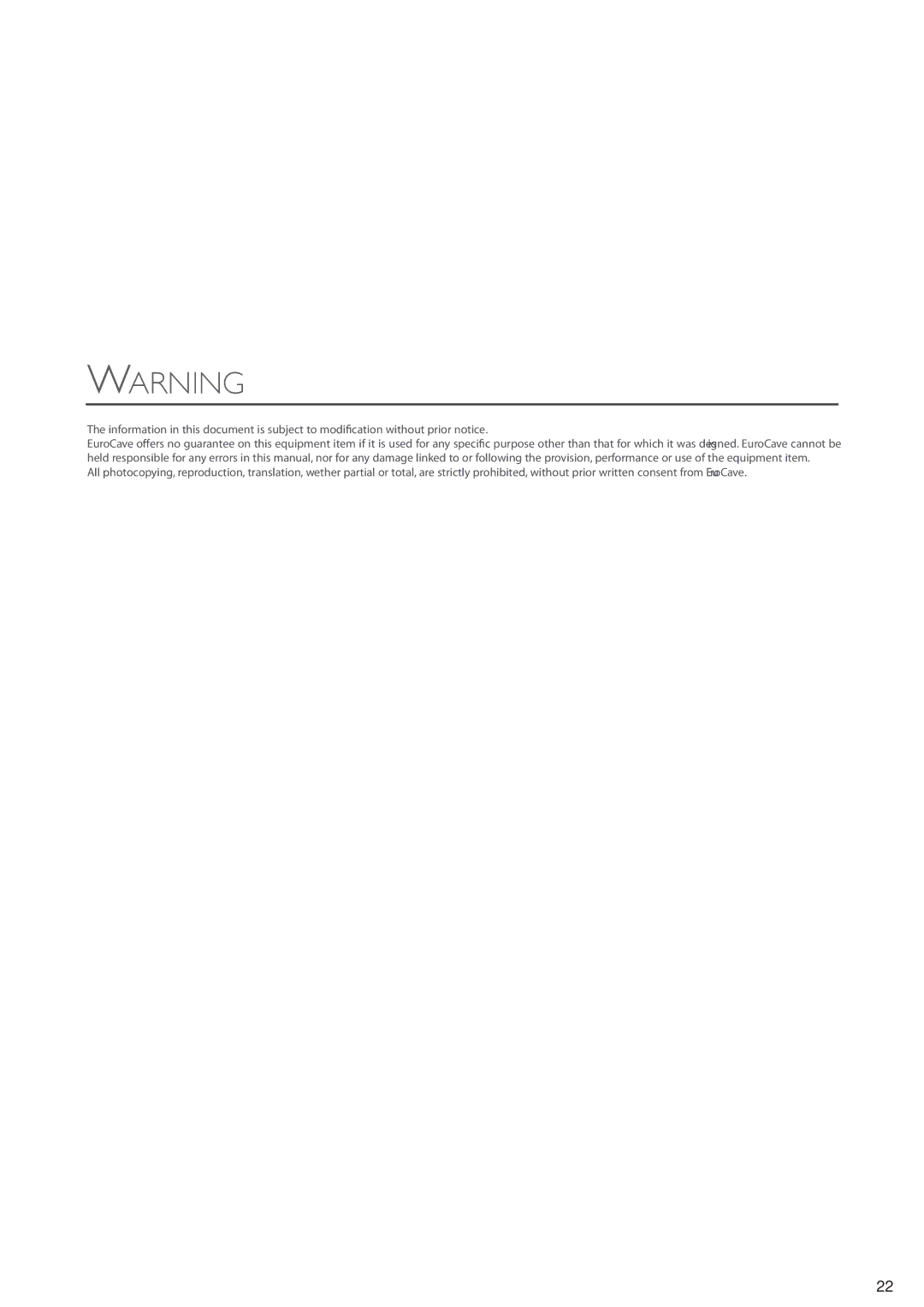25, 50 specifications
The Eurocave 50,25 is a premium wine cellar designed for both wine enthusiasts and collectors, providing an optimal storage solution to preserve and enhance the quality of fine wines. With a sleek and stylish design, this model not only serves a functional purpose but also adds a touch of elegance to any interior space.One of the standout features of the Eurocave 50,25 is its capacity. It can accommodate up to 50 bottles, making it suitable for both moderate and larger collections. The cellar is designed to store your bottles horizontally, ensuring that the corks remain moist and preventing oxidation. This thoughtful design helps maintain the wine's integrity over time, ensuring that each bottle is ready to be enjoyed when the time comes.
The Eurocave 50,25 is equipped with advanced temperature control technology, allowing users to set and maintain the perfect storage conditions for their wines. With a temperature range of 5 to 20 degrees Celsius, this wine cellar is highly versatile, catering to the needs of different wine types, including reds, whites, and sparkling wines. The cellar features precise electronic controls that ensure consistent temperatures, eliminating the risk of detrimental fluctuations.
Moreover, the Eurocave 50,25 employs a dual-zone cooling system, which enables the separation of storage environments within the cellar. This feature allows wine enthusiasts to store various types of wines at their ideal temperatures simultaneously, catering to a diverse collection.
Another significant characteristic of the Eurocave 50,25 is its humidity control technology. Maintaining optimal humidity levels is crucial to prevent cork deterioration and evaporation of wine. This wine cellar features a built-in humidification system, ensuring a stable level of humidity around 50-80%, which is ideal for wine storage.
In addition to its functional features, the Eurocave 50,25 is designed with aesthetic appeal in mind. The unit comes with a sleek, contemporary design and soft interior lighting, allowing users to display their wine collection attractively. The insulated glass door provides visibility while protecting the bottles from harmful UV rays.
Overall, the Eurocave 50,25 combines state-of-the-art technologies with an elegant design, making it an ideal choice for serious wine collectors and casual enthusiasts alike, who value quality storage and display solutions for their prized wine selections.
